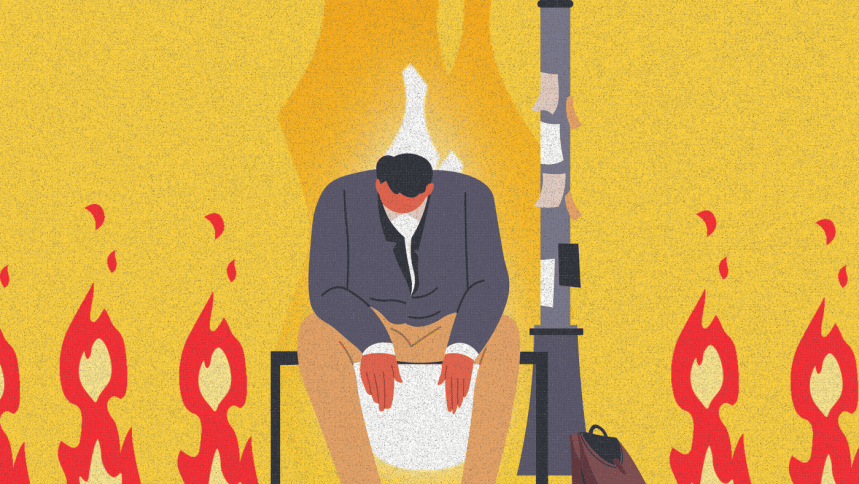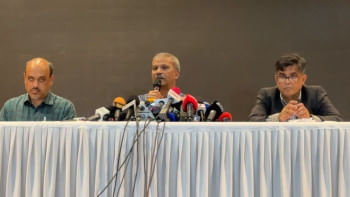The smart way to avoid burning out at work

Bangladesh's corporate economy is moving at pace. Hours can be long, commutes punishing, and the smartphone rarely sleeps. Burnout is a predictable consequence, but it is not inevitable. Let's take a look at what burnout is, why the risk is acute in Bangladesh, and the most effective, evidence-based steps individuals and employers can take to prevent it.
What burnout is, and why the definition matters
The World Health Organization classifies burnout as an occupational phenomenon arising from chronic workplace stress that has not been successfully managed. It is characterised by exhaustion, increased mental distance or cynicism towards one's job, and reduced professional efficacy. The framing is important: it situates responsibility not only with individuals but with how work is designed, resourced, and led.
Why the risk is amplified in Bangladesh
Working time rules create a permissive ceiling for overwork. The Bangladesh Labour Act provides for eight hours a day and 48 hours a week as standard, yet allows up to 10 hours a day and 60 hours in a week including overtime, provided the annual average does not exceed 56 hours. In practice this can normalise extended days and late communications, leaving little room for recovery.
Support systems for mental health remain thin. The National Mental Health Survey (2018–19) found a prevalence of mental disorders of 16.8% among adults, and a treatment gap exceeding 92%, meaning the overwhelming majority of those who need care do not receive it. In corporate settings, stigma, and limited benefits can keep problems hidden until they become performance issues or crises.
Unpaid care loads compound the strain, particularly for women. The national Time-Use Survey shows women in Bangladesh spend about 5.9 hours per day on unpaid care and domestic work, compared with 0.8 hours for men, a disparity that tightens the squeeze between office demands and home responsibilities.
Everyday frictions also matter. Dhaka's congestion is severe enough to cost an estimated 3.2 million working hours each day, eroding time and energy that could otherwise be used for rest, family or exercise. Climate shocks add another layer: nationwide heatwaves in April-May 2024 forced school closures for up to two weeks, disrupting family routines and highlighting the health and productivity impacts of heat, including for indoor workers without adequate cooling.
What corporate workers can do this week
Small, deliberate changes deliver outsized benefits. Evidence from a 2022 meta-analysis indicates that short "micro-breaks", up to around 10 minutes, reduce fatigue and improve vigour; performance benefits are clearer as breaks get a little longer. Building two-minute stretch resets after meetings and a 15-20 minute pause after 90 minutes of focused work can help you sustain attention across the day.
Protecting deep-work windows is equally practical. Blocking 60-90 minutes for high-cognitive tasks when you are freshest - for many offices, early in the day before meetings and messaging ramps up - and batching email and messaging checks into set windows reduces cognitive switching costs that drive exhaustion. Psychological detachment after hours matters as much as what you do during the day; synthesised evidence shows that switching off improves sleep and mood and lowers exhaustion, and that structured interventions can strengthen this habit. Simple rituals at the end of the workday, a personal "latest email" cut-off and disabling push notifications outside working hours are low-cost ways to start.
You can also reshape the job you already have. Longitudinal and meta-analytic research on 'job crafting', i.e. adjusting tasks, relationships and how you frame your role, links these small redesigns with lower burnout and higher engagement over time. Trading a low-impact status meeting for a client call, automating a repetitive report, or collaborating to rebalance a team backlog are practical examples that fit Bangladeshi corporate settings.
Local conditions require local adjustments. Using flexible hours, where your employer allows it, to avoid peak-traffic commutes; clustering in-person meetings on the same day; and keeping one or two remote days for deep work can reclaim time otherwise lost to congestion. During heat alerts, hydrating, lightening dress codes, and shifting strenuous on-site tasks to the coolest parts of the day all reduce strain.
Boundaries in an always-on culture
Bangladesh has clear rules on working hours but no specific statutory "right to disconnect". That makes team-level norms crucial. Agreeing quiet hours and response-time expectations, defining what counts as urgent, and distinguishing channels for critical versus routine messages can lower out-of-hours pressure without hurting responsiveness. Managers modelling these norms - for example, scheduling emails rather than sending them late at night - signals permission for healthier behaviour. The point is not to restrict flexibility but to remove ambiguity that otherwise breeds stress.
What managers and employers can implement quickly
Leadership has a disproportionate impact on burnout risk because it shapes both workload and the resources people have to meet it. A pragmatic starting point is to strip out unnecessary work by auditing recurring meetings and reports, consolidating where value is unclear. Protecting recovery is next: encourage the full use of annual leave and discourage excessive carry-over, and design meeting-light blocks across the week so people can do focused work without after-hours catch-up. Evidence favours resource-oriented design: giving employees latitude in how they meet goals, recognising good work in public, and running one-to-ones that ask explicitly about workload and energy, not just KPIs, correlates with lower exhaustion and better retention. In a warming climate, heat should be treated as an occupational risk with a basic protocol: flexible hours, ventilation checks, and hydration access during alerts.
Compliance should be a floor, not a ceiling. Align scheduling and overtime practices with the Labour Act limits, keeping in view the 60-hour weekly cap and 56-hour annual average, and ensure overtime is compensated as the law requires. In large offices, instituting 'break architecture' by defaulting meetings to end five minutes early, prompting brief resets between calls and nudging people to step away at lunch can institutionalise micro-recovery without cutting output.
If you are already struggling
Burnout tends to present as persistent exhaustion, dread at the start of the day and a sense of ineffectiveness or detachment. Early conversations with a trusted manager or HR can open adjustments to workload or deadlines. Confidential support exists locally: Kaan Pete Roi operates an emotional-support helpline on 09612119911, while Moner Bondhu provides counselling and a 24/7 hotline on +880 1776632344 alongside in-person services in Dhaka. In an emergency, call 999.
The bottom line
Avoiding burnout is less about individual grit and more about smart design of time, energy, and expectations. When workers and managers align on boundaries, breaks and better workflows, and when employers treat recovery as a performance enabler, teams can stay healthy and productive even in Dhaka's toughest weeks.

 For all latest news, follow The Daily Star's Google News channel.
For all latest news, follow The Daily Star's Google News channel. 








Comments